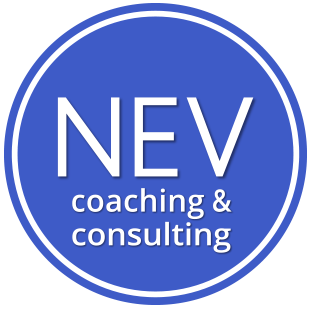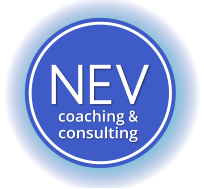 The concept of mindfulness has been active for many years and we at NEV Coaching & Consulting are very excited to support this initiative. As such, we begin with the most basic and fundamental: meditation.
The concept of mindfulness has been active for many years and we at NEV Coaching & Consulting are very excited to support this initiative. As such, we begin with the most basic and fundamental: meditation.
“My mind is too active for meditation”… “meditation is not my style of relaxation”… “meditation doesn’t work on me”. Whatever your reasoning up until now, this post is dedicated to encouraging you all to truly consider the idea that meditation is accessible to you, will give you tremendous benefits, and never has to be perfect.
It is no less relevant to each and every one of us than sleep or exercise or good nutrition.
The challenge is that many of us didn’t grow up with it and so, like any other “muscle” that needs some practice and personal adjustment, we can’t feel its benefit without first investing in the basic work of it. But it need not be much.
Here we will talk about the absolute basics and easy practices of getting on the meditation train…forever. To the benefit of pretty much everything and everyone in your life, not to mention: YOU.
1. What IS meditation?
At it’s core, it is simply the exercise of being still and gently focusing your attention on your breath and other simple concepts to help you.
- (1) Center on the present moment.
- (2) Take some objectivity to your current circumstances and experiences.
- (3) Get your body into one of its most natural relaxation states, without negative after-effects.
It’s important to know that meditation is a tool, a skill, available to all of us, like reading.
Some people may use it to complement their spiritual practice but meditation is not religious in any way and so does not pose any kind of conflict to other dogmas.
Just like reading, it’s your body’s wonderful, risk-free way of finding balance and peace.
2. Why should I bother with meditation?
The benefits are enormous.
It is widely recommended, even by doctors, as a gold standard practice to manage stress, anxiety, insomnia, to heal and prevent countless physical problems and pain. And so very much more.
In essence, to feel more calm overall and just plain happy. It’s a no-brainer.
3. How does one meditate?
There are many ways to start, but, here are the basics:
Starts with:
- Find a place that is private and a moment that is quiet and without interruption – at least 5-10 minutes or up to 30 (advanced mediators can go for more but there is no need at the beginning). Really just 5-10 minutes is enough to start.
- Get into a position that is comfortable – either sitting or lying down.
- Close your eyes.
- Make sure your posture, regardless of the position, is relaxed as possible so that you are not contorting, constricting or otherwise forcing any muscle.
Now:
- Consciously relax your muscles by imagining that whatever tension or pain that may be there, can leave you for now.
- Start to take notice of your breath, as it enters and leaves your body, but without trying to control it in any way. You can also just focus on the colors or shadows you see behind your eyelids. Just observe.
- Try and enjoy the simplicity of your breath and the normal functioning of you very intelligent body. There is no way that this has to feel or be.
- You may sense the sounds, air, smells, and other sensations around you. That’s great, take notice of them and feel the complete release of just being in the present moment.
- If thoughts enter, don’t push them away but don’t “enter” them either to further contemplate them. Just acknowledge them, as one might sequential drops of water, puffs of smoke, train cars going by, or whatever concept your mind comes up with, and focus back on your breath.
- Don’t force anything but commit to the moment. If you have an itch, a thought, whatever, just recognize it (scratch it if unbearable) but always return to the moment of your breath, and your brilliant body doing its continuous daily thing.
- Keep breathing, keep sensing but always coming back to your center. Try and let go and when you feel that enough time has passed, and you are ready, open your eyes.
4. Why isn’t meditation working for me?
First of all, it’s ok and the beginning is hard for practically everyone. It certainly was for me. The important thing to remember is that meditation is not something one achieves or is supposed to master.
Even the most practiced meditators recognize that some meditations go better than others.
It’s not a task, it’s a state of being.
The same way that being creative is more attainable at certain times rather than others, even for the most practiced artists. Or that workouts for even professional athletes have their ups and downs.
That said, here are some things to consider:
- Is it the right place? If your meditation area is not private, quiet, and generally serene, it will make it more challenging, especially in the beginning. Once you get used to it, it will be easier to meditate in more diverse places.
- Is it the right moment? If you are in a situation where you can be interrupted, there is a lot of other distraction or you are especially stressed or in “active mode”, it may not be the right time. What tends to work best, especially when starting, is right after you wake up, during a lunch break, or right before you go to bed. And leave your phone in a drawer in another room.
- Are there other factors that may be complicating it? If you have had a lot of coffee or other substances that can meaningfully affect your system, if you are physically uncomfortable (from too much food, awkward position, etc.) or are so tired you can barely focus (at which point just go to sleep), this can challenge your meditation.
- Are you just feeling restless? It will happen, just breath and continue trying every day.
5. Is there anything that can help me?
Absolutely. For meditation beginners, I always recommend having someone or something to guide you, if doing it on your own is too difficult. Doing so makes you no better or worse for using it.
- Getting an audio or application to listen to someone’s recording of a guided meditation – I love Daniel Goleman’s “The Art of Meditation”. Also, here is the list of 2016 best meditation apps from Healthline for iPhone and Android.
- Going to yoga or other mindfulness activities where guided meditation is offered. Make sure to pick a teacher and a class that feels right for you.
- Being in nature and changing your environment from the hectic day to day, even if it is your backyard, a park on the way home, etc. can help you “extract” yourself from your usual mode.
6. What is the great secret to becoming a regular meditator?
There actually is one, and it is so simple. Just keep doing it.
- Regularly (every day but perhaps not more than once a day to start).
- With patience, without judging or over analyzing your meditation practice, but sticking to it.
- And 5-10 minutes to begin is just enough.
Like any new habit, perseverance and some discipline is key. But again, it need not be much. If you try and stick to it every day, within a few weeks you can see important progress. Even perhaps within a few days. But you can feel the momentary calm and relaxation immediately.
7. What if I start but then stop doing it for a time?
Like any other quality of life activity, it ebbs and flows. Even as someone who has been meditating for years, there are seasons when I do it less often or not at all.
The important thing is that like a good workout, or a fantastic night of sleep, you can come back to it whenever you want.
And in the same manner, doing it most regularly is when you get the best results.
PS – children are starting to meditate and it’s doing them wonders for ADHD, self-esteem, relationships, and much more – without medication! Read here.
What have been your experiences with meditation? Is there anything that worries you about it? What advice do you have to help others get started?


